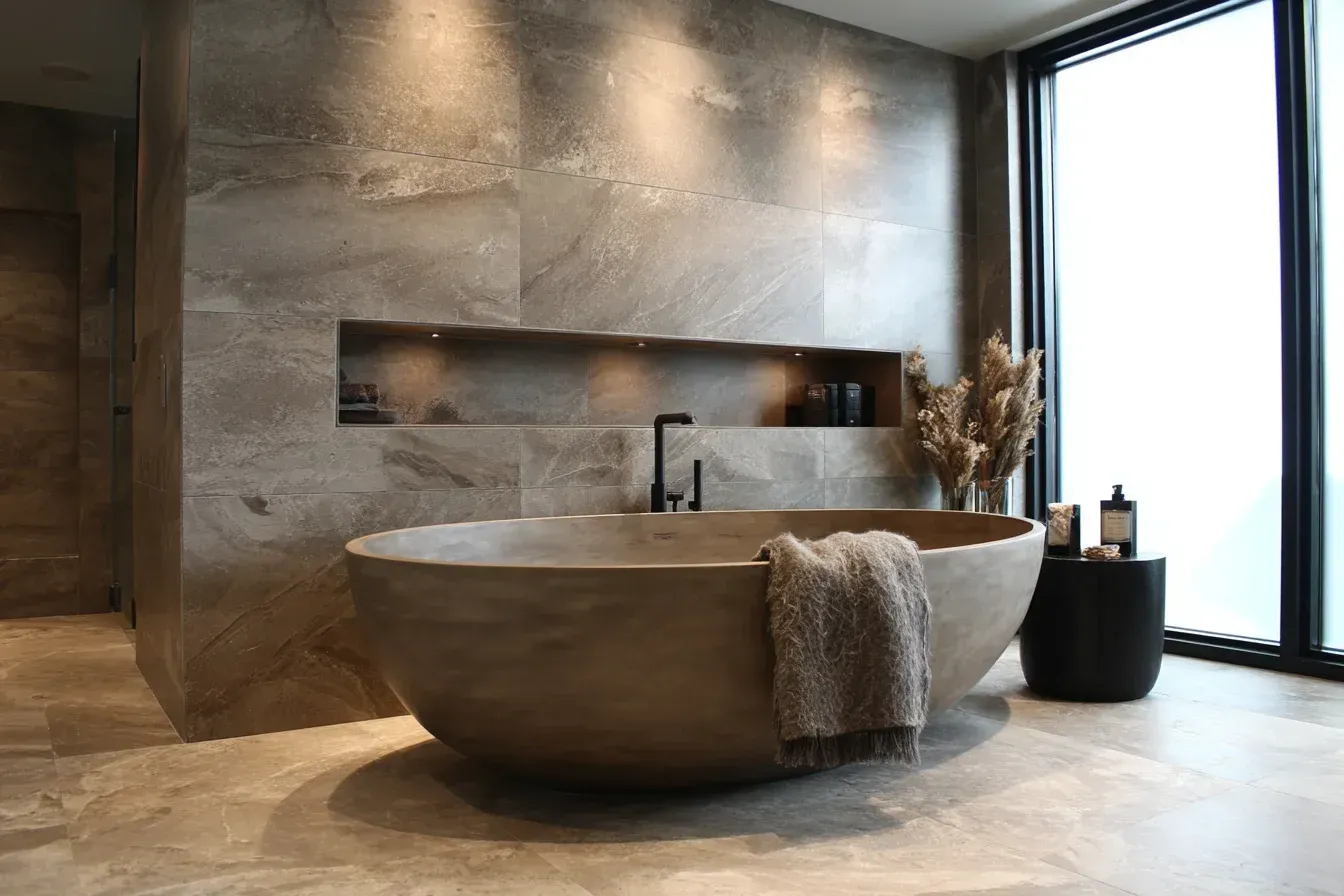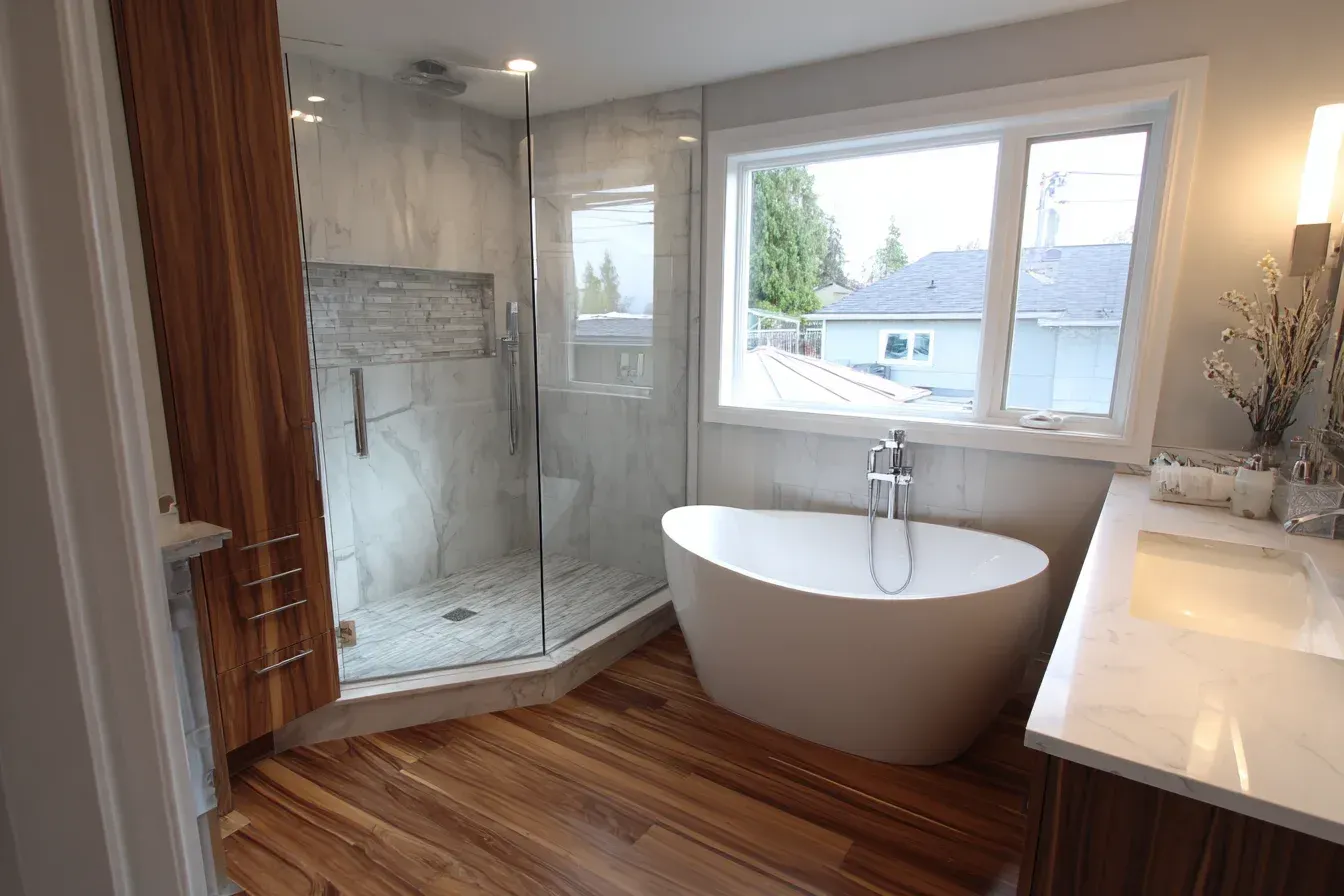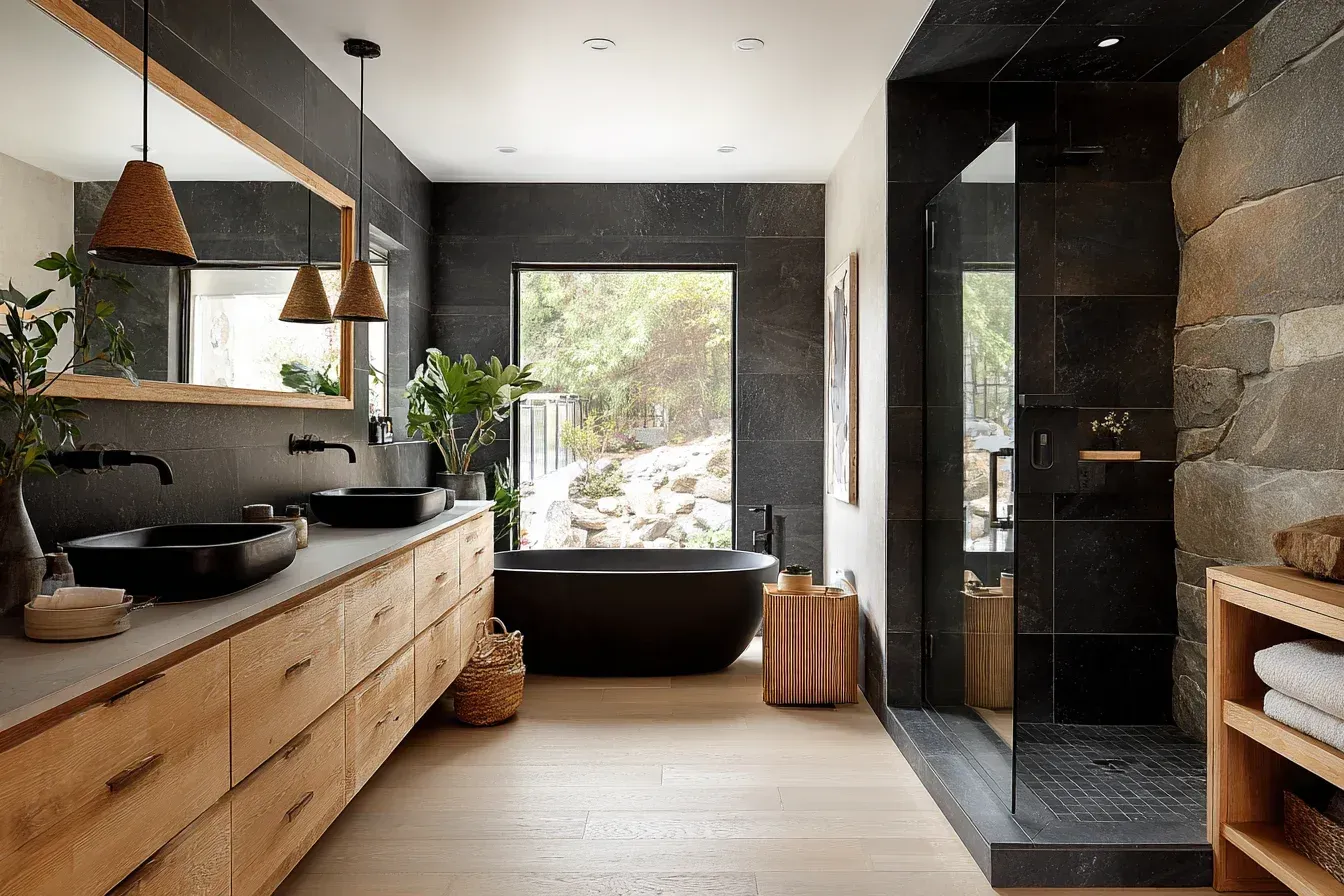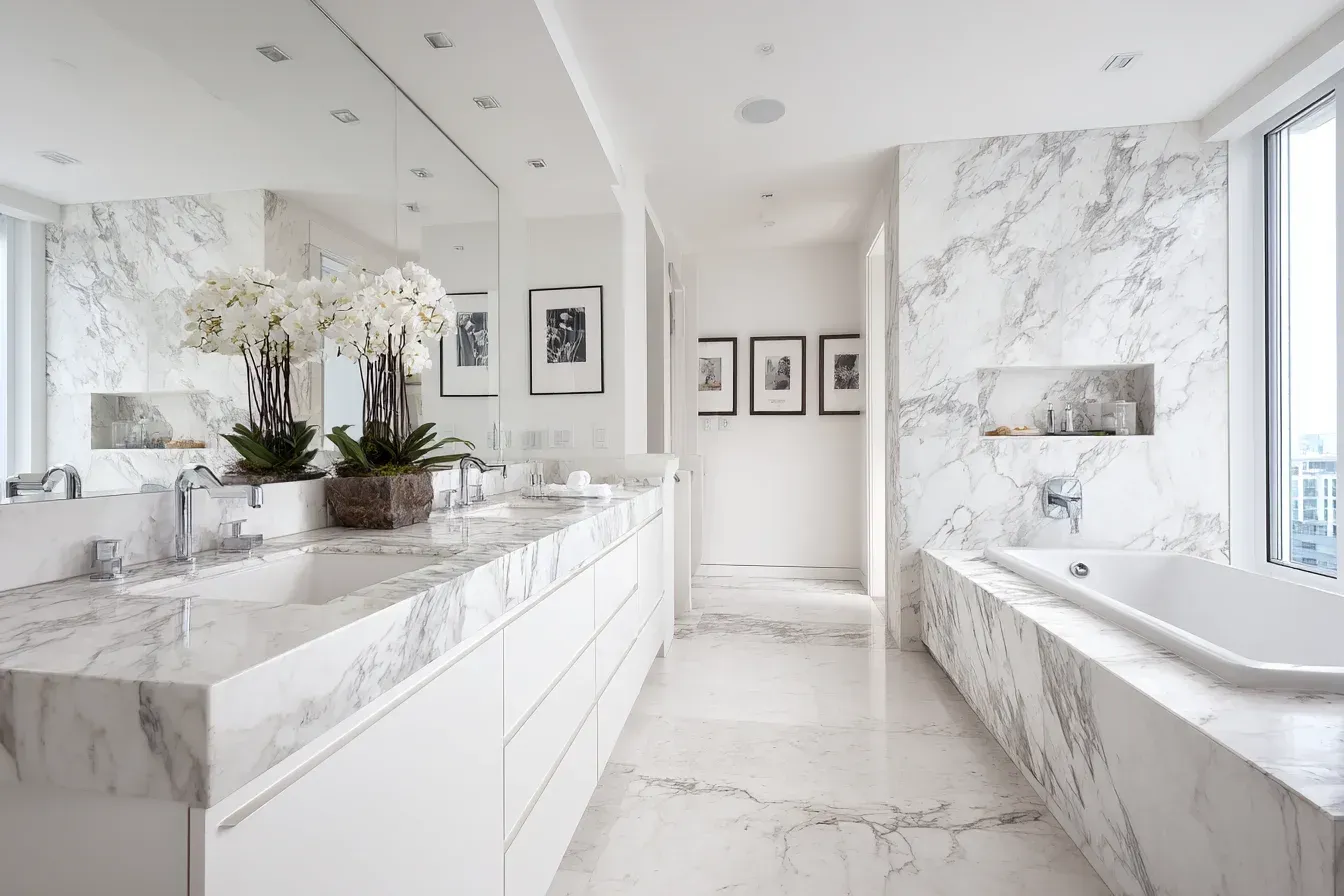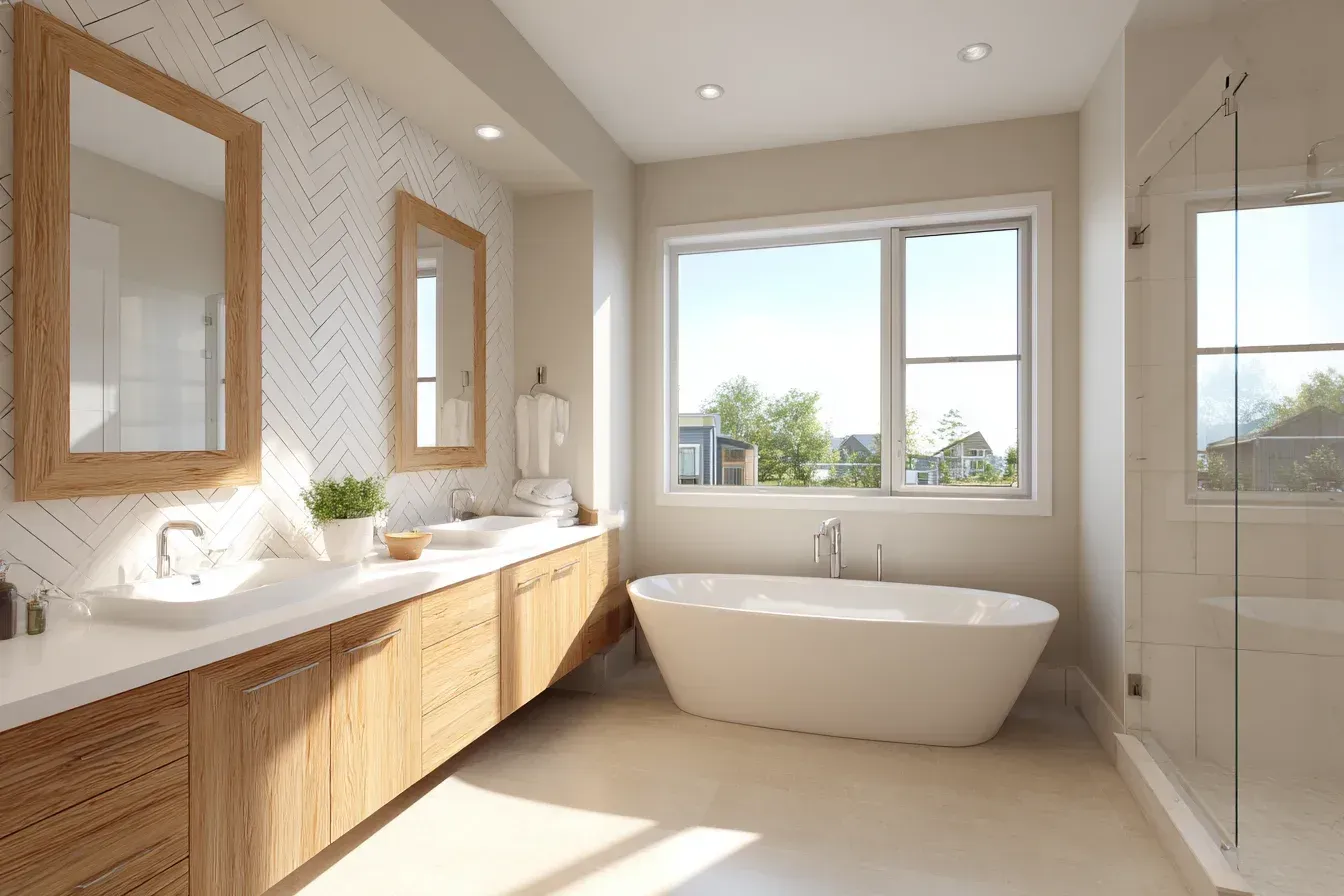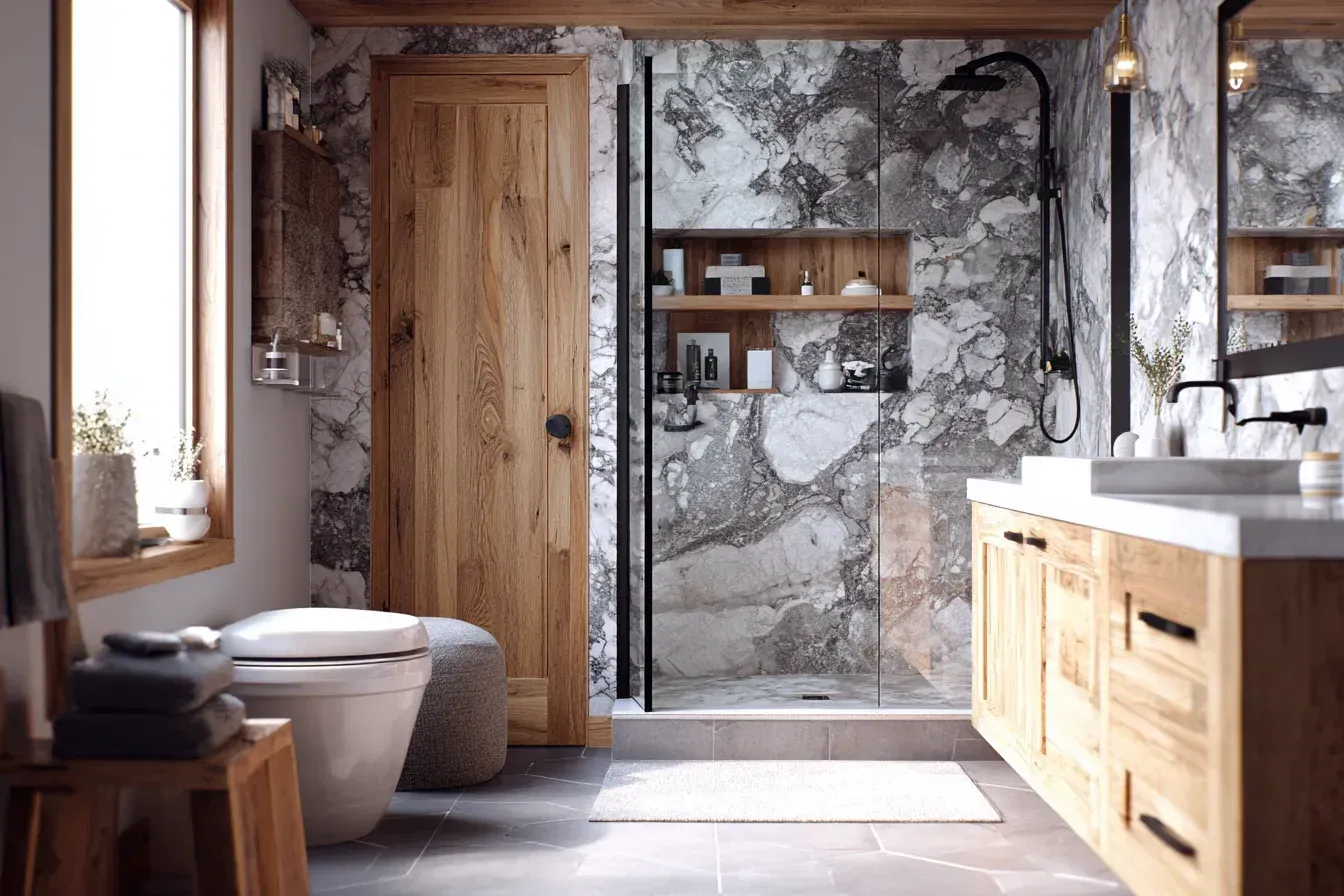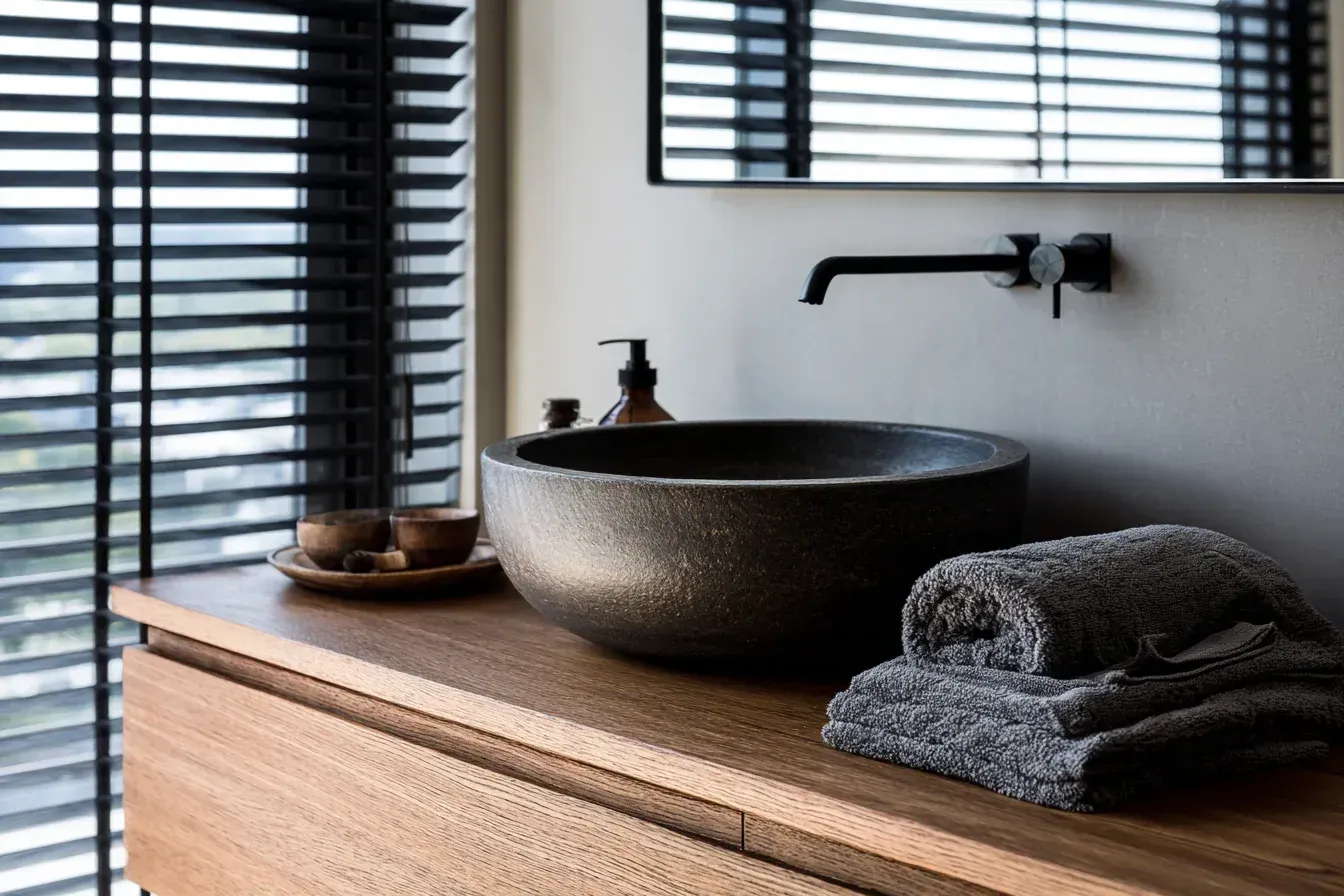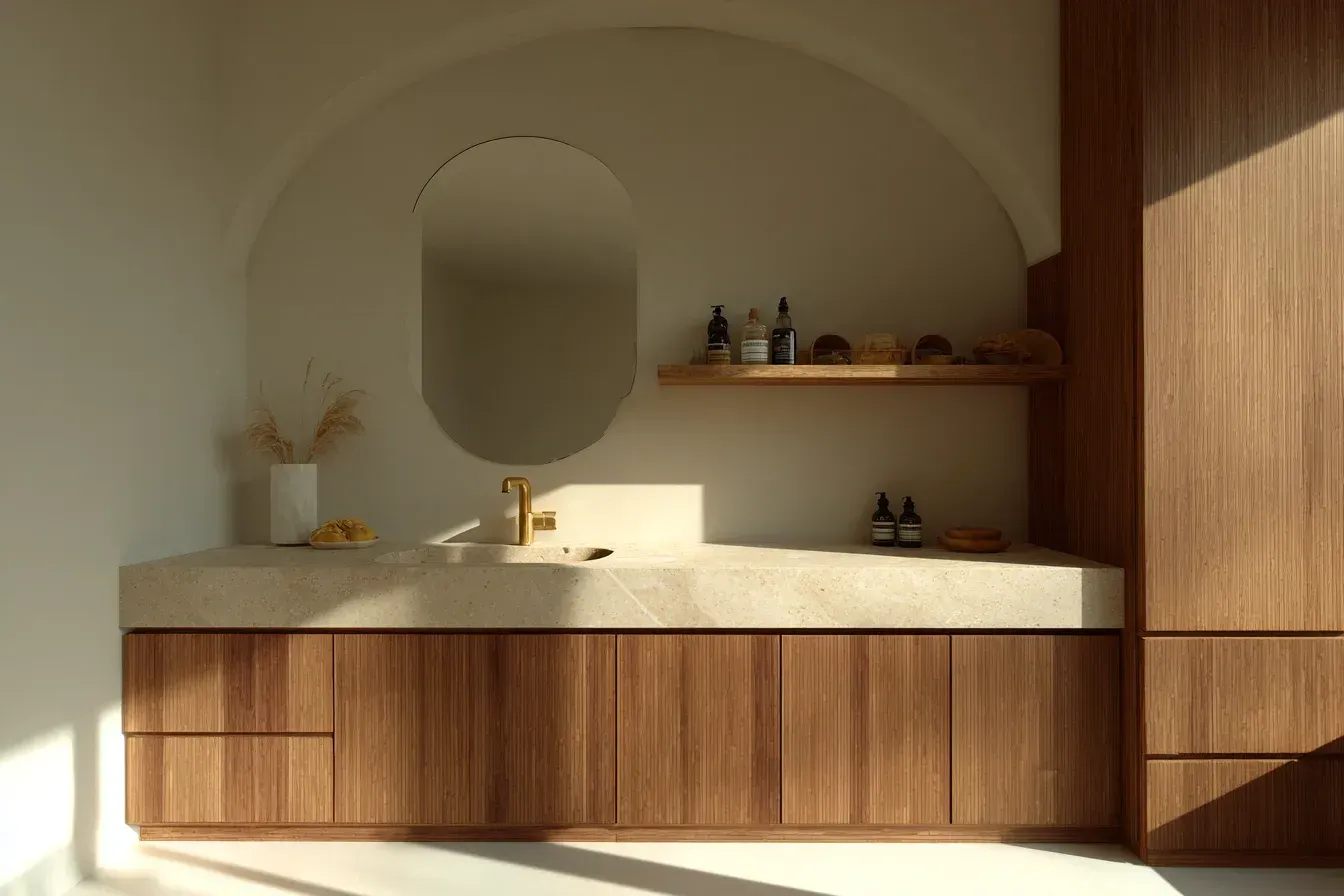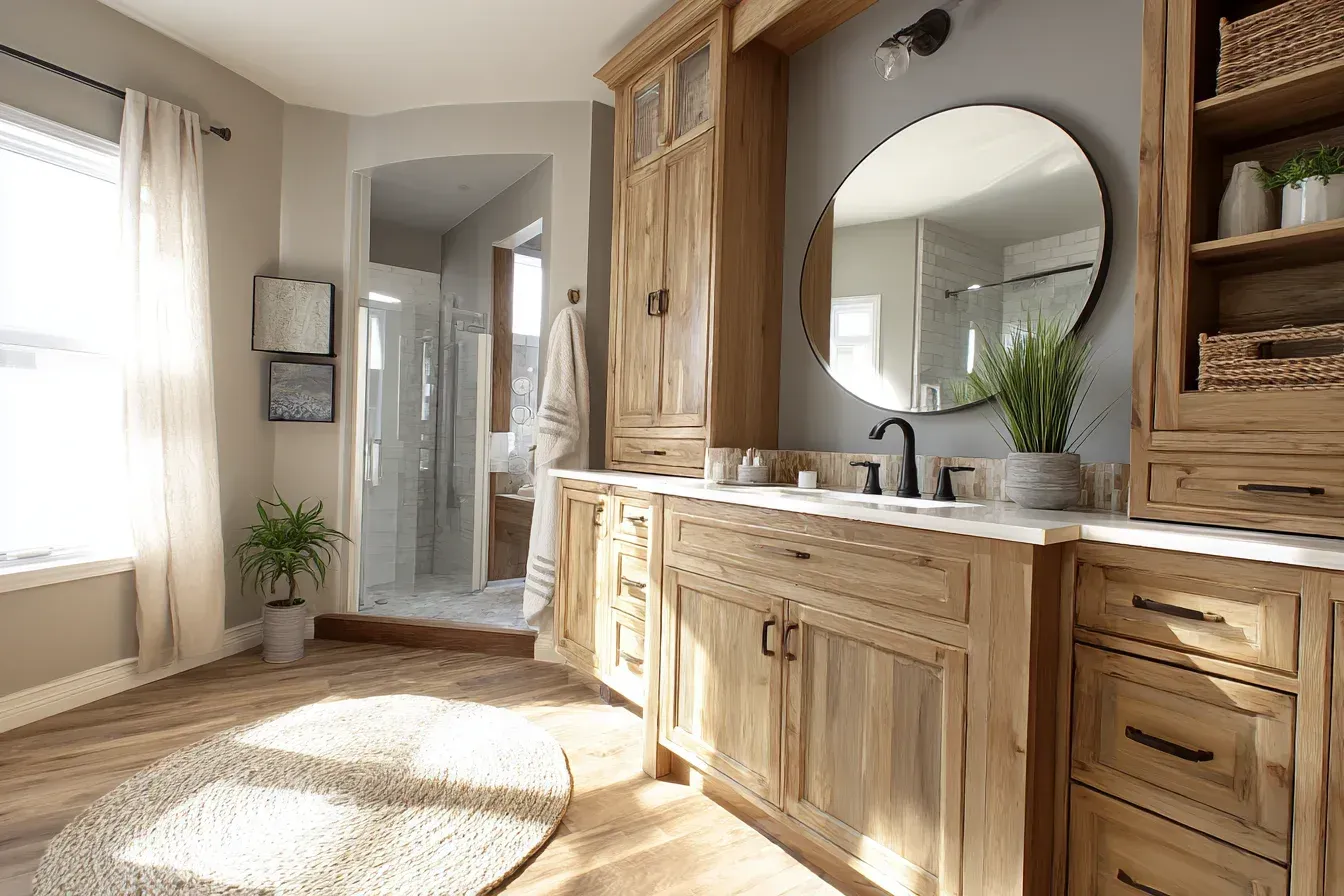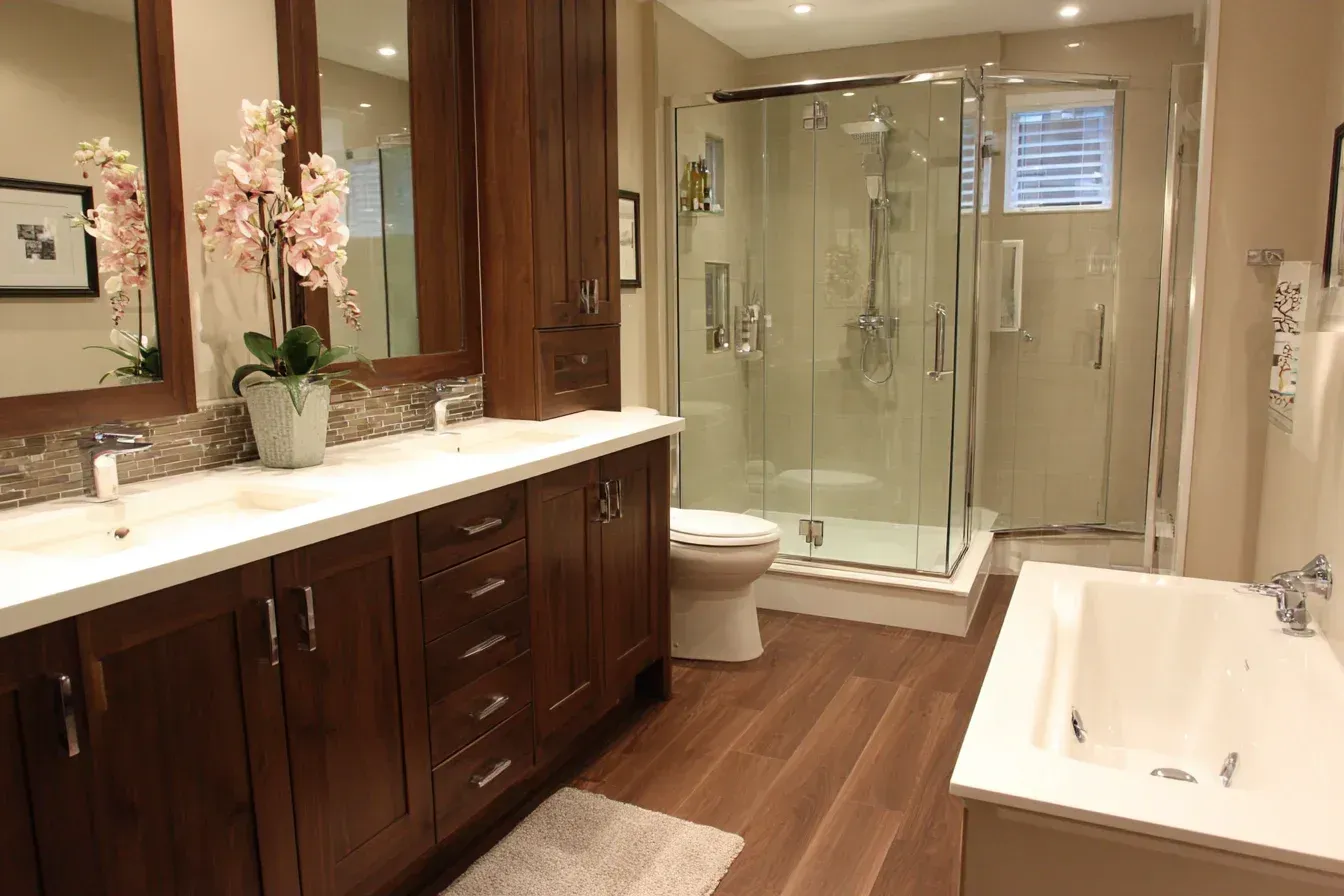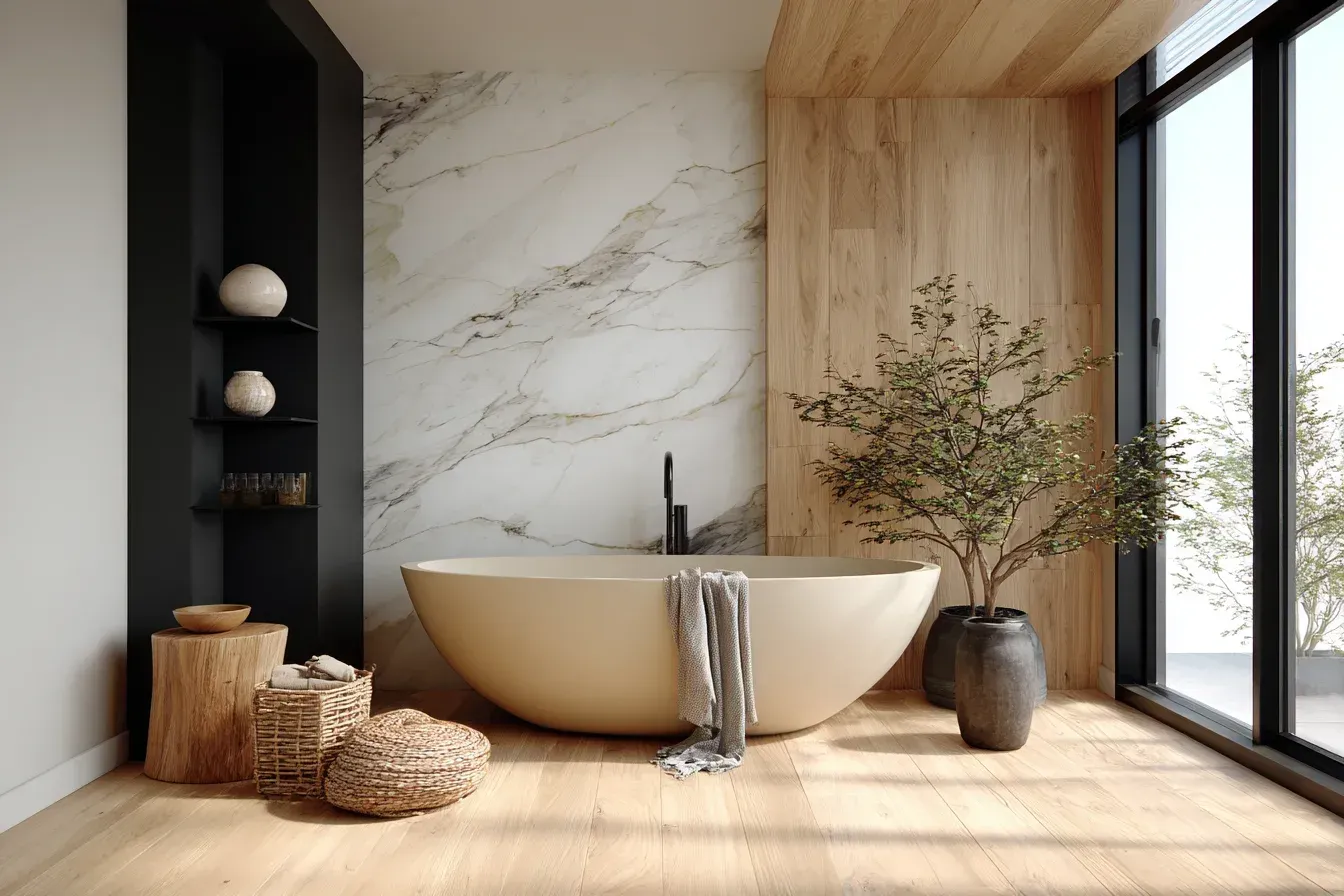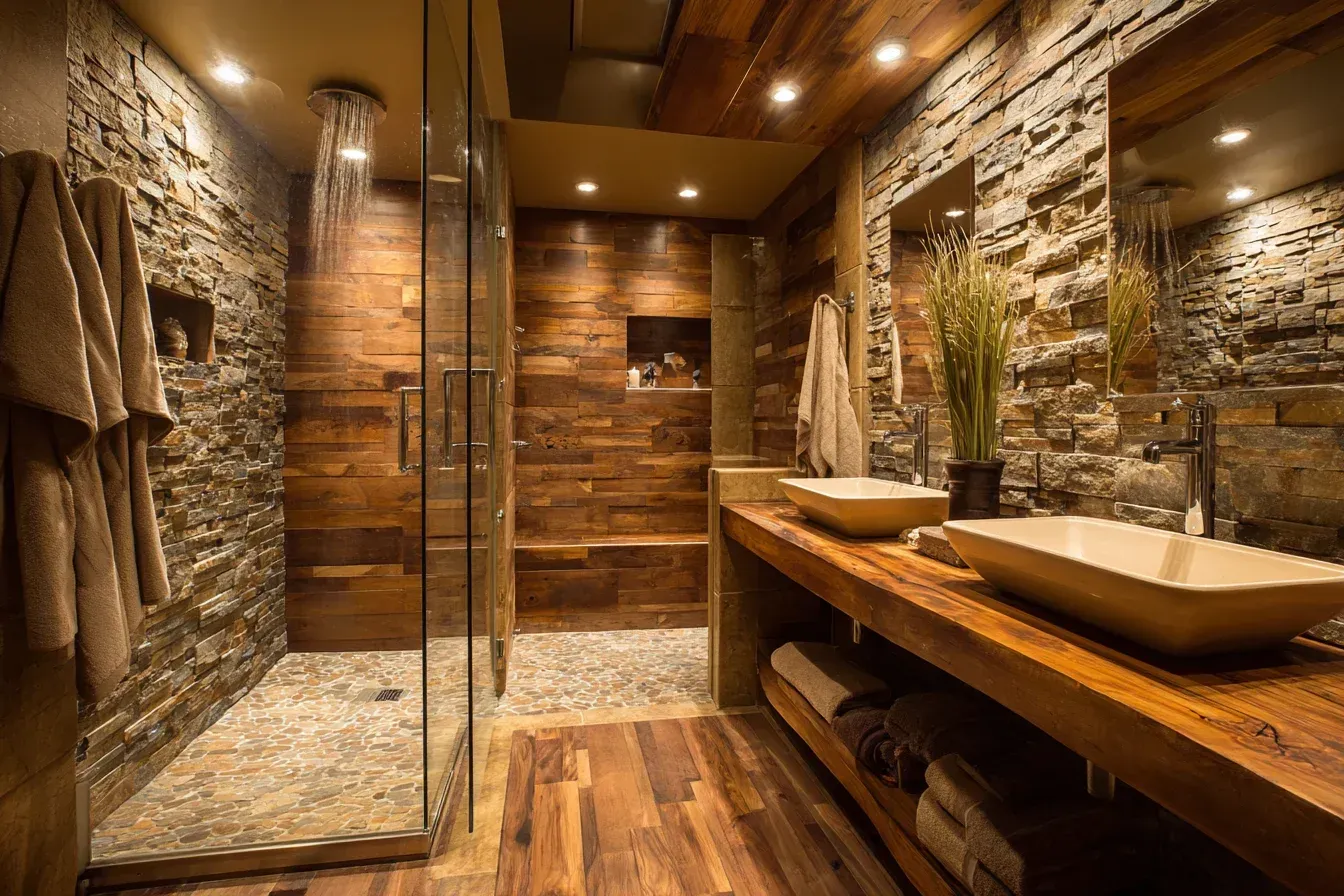Walk-In Showers vs. Bathtubs: Which Is Right for Your Home?
When planning a bathroom renovation, one of the most important decisions you’ll make is choosing between a walk-in shower and a bathtub. Both offer unique benefits, design possibilities, and functional advantages. The right choice depends on your lifestyle, available space, design goals, resale value, and long-term needs. This comprehensive guide breaks down the pros and cons of walk-in showers and bathtubs to help you make the best decision for your home.
Why This Decision Matters in Bathroom Renovations
Your choice significantly impacts:
- The overall layout of your bathroom
- Daily convenience and comfort
- Accessibility and safety
- Resale value and buyer appeal
- Aesthetic style and ambience
- Long-term functionality for your household
Instead of guessing, evaluating each option carefully ensures your renovation delivers both beauty and practicality.
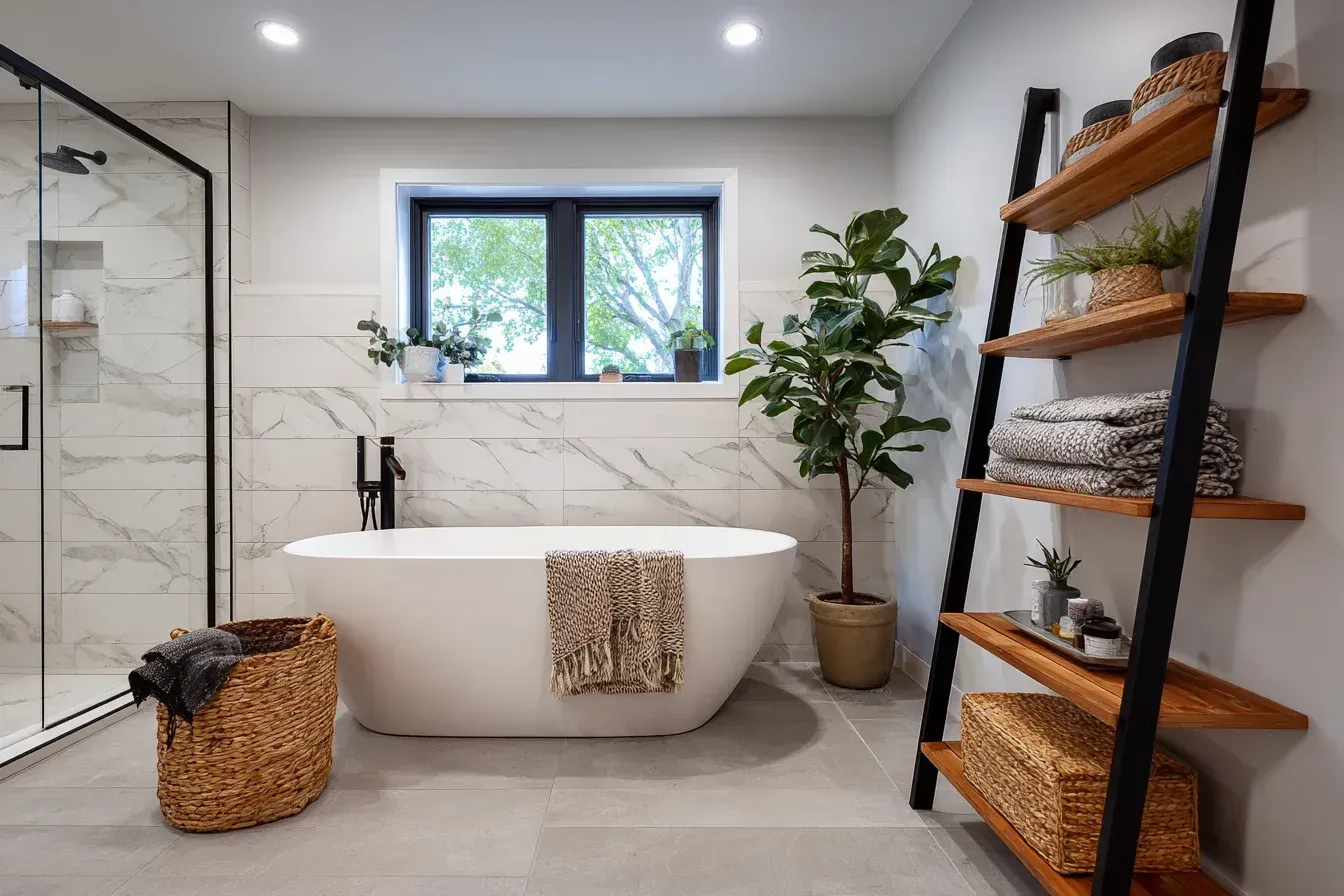
1. Walk-In Showers: A Modern, Space-Saving Favorite
Walk-in showers remain one of the most requested upgrades in modern bathroom renovations. They offer open, spacious designs that improve accessibility and visual flow.
Benefits of Walk-In Showers
1. Modern and Sleek Appearance
Walk-in showers create a clean, contemporary look that suits almost any design style—from minimalistic to luxury spa-inspired. Frameless glass adds openness and allows light to flow throughout the space, making small bathrooms feel much larger.
2. Space-Saving and Layout-Friendly
Walk-in showers are especially useful in small bathrooms. Removing a bulky tub frees up square footage, creating room for:
- Larger vanities
- Additional storage
- Wider walkways
- More spacious layouts
3. Easy Accessibility
Walk-in showers provide easy entry, making them ideal for:
- Seniors
- People with mobility challenges
- Families with multigenerational needs
- Those planning for aging in place
When designed properly, walk-in showers can be barrier-free and ADA-compliant.
4. Customizable Features
Walk-in showers offer endless customization options:
- Rainfall showerheads
- Handheld sprayers
- Wall jets
- Built-in seating
- Steam shower systems
- LED lighting
- Linear drains
- Full-height tile designs
You can tailor your shower to match your personal style and comfort level.
5. Easy Maintenance
Fewer surfaces, minimal grout lines, and no shower curtain mean easy cleaning. Glass can be treated with protective coatings to reduce water stains.
Potential Downsides of Walk-In Showers
1. No Option for Soaking
If you enjoy long baths, a walk-in shower alone may feel limiting.
2. Overspray Concerns
Open shower designs require proper planning to prevent water leaks or splashing onto bathroom floors.
3. Resale Considerations
Homes without at least one bathtub may be less appealing to families with young children.
2. Bathtubs: The Timeless Choice for Relaxation
Bathtubs offer comfort, functionality, and classic appeal. Whether you choose a modern freestanding tub or a built-in alcove style, bathtubs serve as a relaxing retreat in any home.
Benefits of Bathtubs
1. Ideal for Relaxation
Nothing replaces the experience of a warm bath after a long day. Tubs offer therapeutic benefits such as:
- Stress relief
- Improved circulation
- Muscle relaxation
- Pain relief with Epsom salts
2. Strong Appeal for Families
Families with children almost always prefer homes with at least one tub. It’s much easier to bathe infants and toddlers in a bathtub.
3. Luxury Aesthetic Options
Freestanding tubs create an immediate luxury focal point. Popular styles include:
- Sculptural stone resin tubs
- Freestanding acrylic tubs
- Japanese soaking tubs
- Clawfoot tubs
- Slim oval matte tubs
These elevate your bathroom to a spa-like environment.
4. Versatile Design Options
Bathtubs come in many variations:
- Drop-in tubs
- Freestanding tubs
- Alcove tubs
- Corner tubs
- Whirlpool or air-jetted tubs
You can match your tub style to your bathroom’s theme.
5. Resale Value Benefits
Homes with at least one tub tend to appeal to a wider audience, increasing overall buyer interest—especially among families and luxury homebuyers.
Potential Downsides of Bathtubs
1. Space Requirements
Bathtubs take up more floor space than walk-in showers, which can crowd smaller bathrooms.
2. Less Accessible
Climbing in and out of a tub can be difficult for:
- Seniors
- People with mobility challenges
- Individuals with injuries
3. Longer Cleaning Time
More surfaces (tub walls, grout, fixtures) mean more scrubbing.
4. Longer Installation Time
Tubs often require more plumbing adjustments and structural support, especially heavy stone or cast-iron models.

3. Comparing Walk-In Showers vs. Bathtubs
Below is a clear comparison to help you evaluate your needs:
Space and Layout
- Walk-in shower: Best for small bathrooms
- Bathtub: Requires more space; best for larger bathrooms
Lifestyle
- Walk-in shower: Perfect for fast-paced routines
- Bathtub: Ideal for relaxation and wellness-focused households
Maintenance
- Walk-in shower: Easier and quicker to clean
- Bathtub: Requires more care
Resale Value
- Walk-in shower: Modern buyers love them
- Bathtub: Essential for family-oriented buyers; increases appeal
Accessibility
- Walk-in shower: Superior accessibility
- Bathtub: Harder to access for mobility limitations
4. Should You Choose Both? The Ultimate Combination
If your bathroom has enough space—and budget—having both a walk-in shower and a bathtub offers the best of both worlds.
Why this hybrid layout is ideal
- Appeals to the widest range of buyers
- Suits both rushed mornings and relaxing evenings
- Creates a high-end, spa-like atmosphere
- Offers dual functionality for couples or families
- Improves the market value of the home
This layout is especially popular in master ensuite renovations.
5. How to Decide What’s Right for Your Home
Consider the following factors to make your final decision:
1. What is your daily routine?
If you never take baths, a walk-in shower may be more practical.
If you love soaking, prioritize the bathtub.
2. Who lives in the home?
Families with kids → bathtub is essential
Older adults → walk-in shower for accessibility
Couples → combination setup if possible
3. How much space do you have?
Small bathrooms → walk-in shower
Large bathrooms → either or both
4. What’s your long-term plan?
If you plan to sell soon, consider buyer demographics in your area.
5. What aesthetic do you prefer?
- Modern → walk-in shower
Classic or luxury → bathtub or combined setup
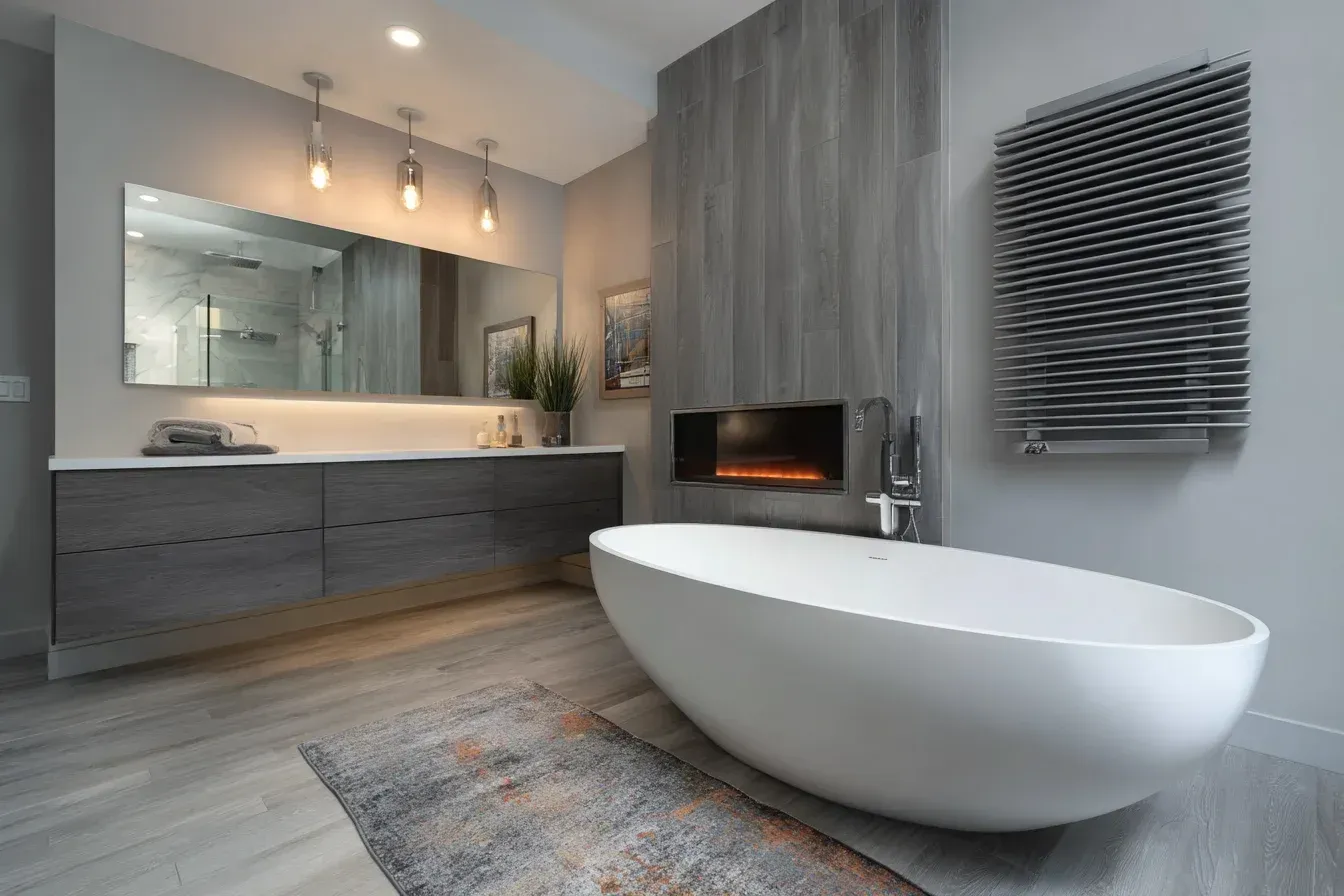
6. Design Tips for Making Either Option Look Stunning
Regardless of your choice, the right design elements can make your bathroom feel polished and high-end.
Walk-In Shower Design Tips
- Use frameless glass
- Choose large tiles for a clean look
- Add a built-in niche
- Install rainfall + handheld combo
- Include a bench for added comfort
- Add LED lighting for ambience
Bathtub Design Tips
- Center the tub as a focal point
- Place near a window if possible
- Use a stunning floor-mount filler
- Add tile or stone accents behind the tub
- Consider a freestanding model for maximum impact
Final Thoughts: Walk-In Shower or Bathtub? Choose What Enhances Your Lifestyle
The best choice depends entirely on your needs, preferences, space, and long-term plans. Walk-in showers offer sleek modern style, brilliant accessibility, and efficient use of space. Bathtubs provide unmatched relaxation, strong family appeal, and luxury ambience. In homes where space allows, combining both creates the ultimate bathroom experience.
Whatever you choose, thoughtful planning and high-quality installation will ensure your renovation adds beauty, functionality, and long-lasting value.
Recent Posts

